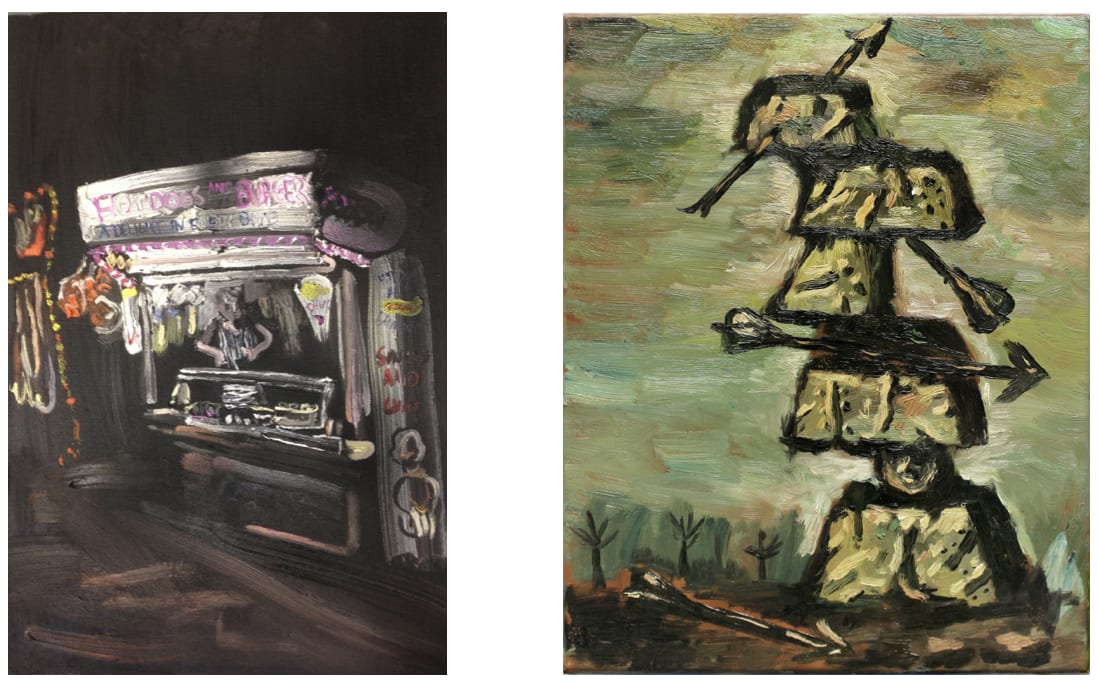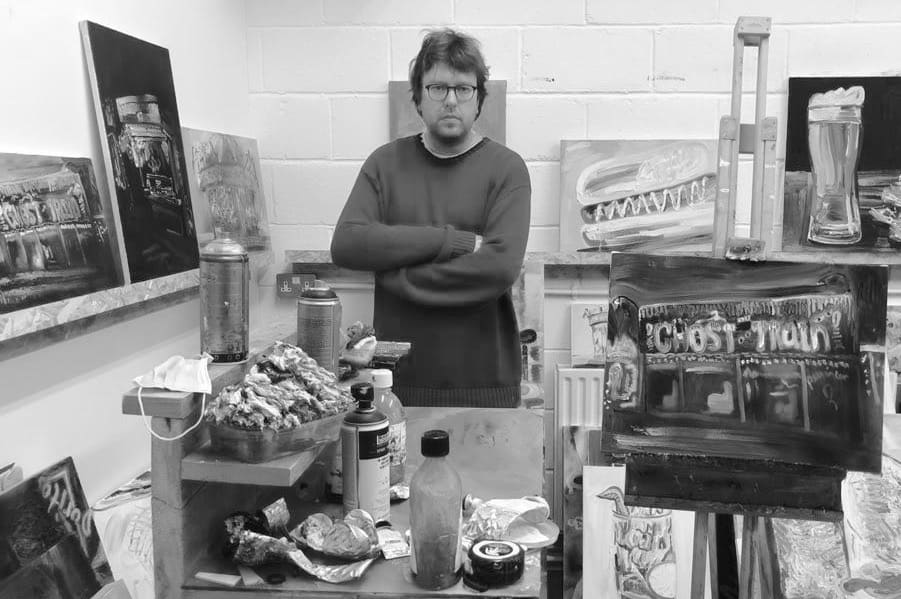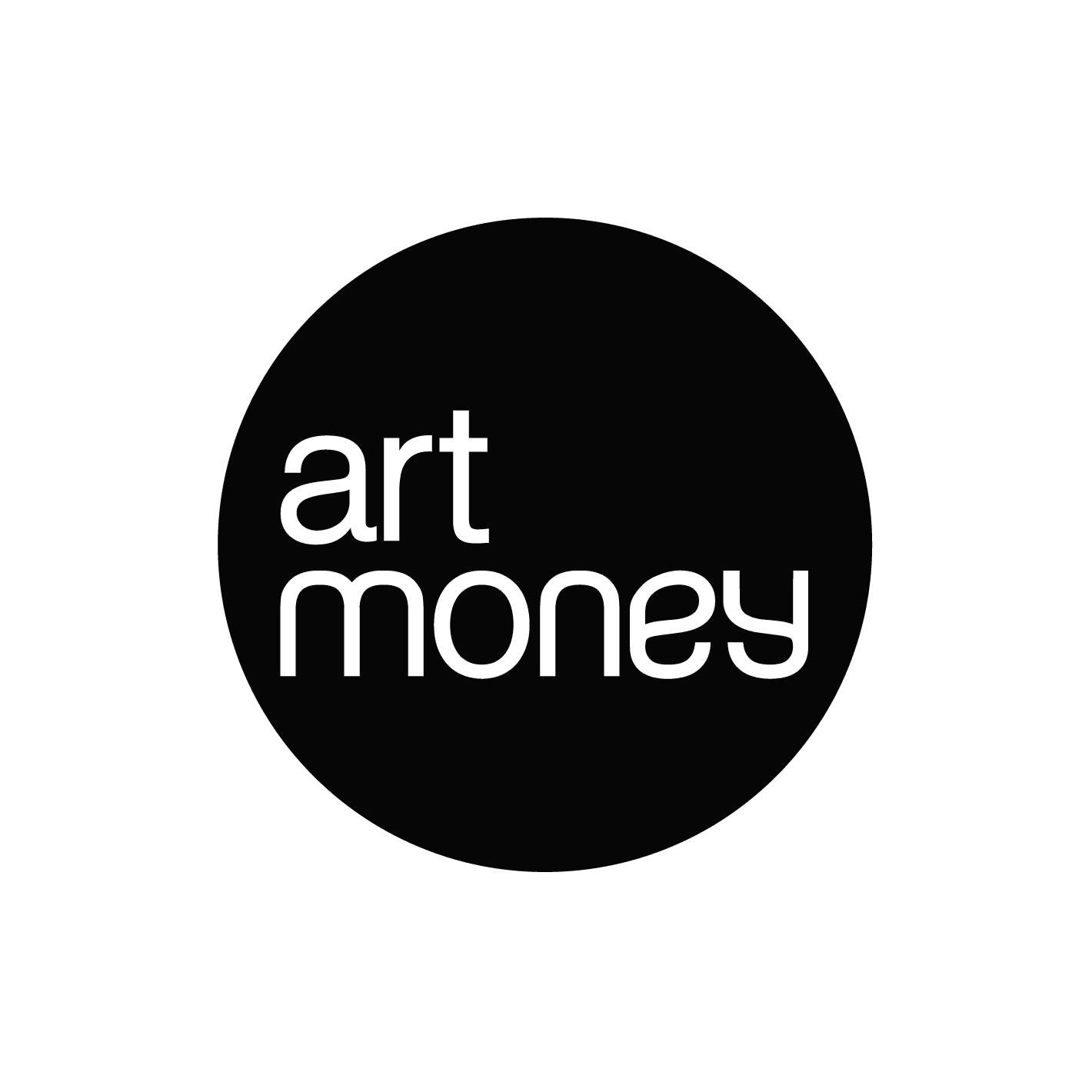


Archie Franks Miroslav Pomichal
FRANKS AND POMICHAL: 'THE STIFLED CRY'
As a painter Archie Franks conjures the fairground attraction, in much the same way as Dickens, did as a writer generations before. He treats the subject, perhaps a caricature in its own right, with paint put on in a perfunctory, somewhat approximate manner, but with well-judged and light touch nonetheless. Franks keeps the apparent attention, the level of virtuosity, to a familiar yet fundamental level. The joy of eating, drinking or visiting a place, is transported and transcribed in a slippery sometimes deliberately tawdry language. This, about fleeting but nonetheless pleasurable sensations, is also, about understanding the value and importance of a timeless parallel of institutions. As fluffy as the candy floss obviously sold near the Ghost Train, Frank’s Rococo Pop reminds of what is good to experience, of a life that is close but held apart from us.
By painting in such a way in terms of weight and attention, Franks enquires, through activity as well as transience, how it is possible to convey the gravitas of contemporary existence. Representing the donut or pint, the hastily bought and quickly consumed food or experience, in such a way, he seems to ask whether painting is able to really represent life? Does something still need to appear separate, close but romantically distant? Must the passion of experience remain distant and on the edge? Simply asking whether the parallel metaphor of structures can be visited, experienced and left behind, this artist who not only plays with the language of another time, within a fixed and understandable genre, but approaches it without appearing heavy, or held down by anything at all. It is as if our relation to the surface of the hamburger, for real, or the jam that oozes out of a donut will fizz away. – the food does not sustain, for instance, the crisp packet, opened only minutes before and laid out on the table, is now empty. Not deliberately smart in his questioning encapsulation of the relationship between paint, pleasure, and permanence, Franks uses an appropriate gallery of reference - a focus just about sustained from temporary time and place.
Both Archie Franks and Miroslav Pomichal admire Soutine, whose emphatic work is about the close relation between description and paint, the making of a physical skin, upon which to hang subject. Both artists like to marry suggestion with material in such a way as to build subject and justification. Detailed armour, like stock elements from the prop store, is piled up to almost cover the surface and push out the light in Pomichal’s paintings. Solid walls of craft and mock brass with fluttering standard, and helmet on top, allows an indulgently painted sky to peeking through from behind. As if lifted from a comic - all front and fanfare – the artist paints with sophisticated ease and great humour to make a sort of pimped Cubism while formal toughness renders each of the paintings as full as an overcrowded ship, perhaps of fools, while the virtuoso effect of light on dark as well as glow is easily as reminiscent of Venice Beach as Venice.
Unleashed, or released theatrical swagger, in ‘Anti-Portal’, for instance, shows mock lightening and jagged points illustrating and illuminating a sandwich of stone blocks with mock goth virtuosity and apparent weight balanced precariously on air. In another work, crosses, or birds, circle the top. The sky behind, reminiscent of that in Constable’s Hadleigh Castle, but very obviously heightened. Unreal, with over emphasised tangibility, there is however, in the elements that cut out the light, no apparent ambiguity of proportion. As the aesthetic is so much about mocked up rustication, all broken, tarnished elements appear to have been excavated and then re-embedded in the surface. With objects themselves enmeshed by paint within the canvas the artist appears to be constantly thrilled by the possibility of creating something out of graphic, cinematic and painterly association and reproduction. This swag bag of tactics, a manner of confrontational pride, displays the spoils of an imagined cultural war in a shallow grave.
Sacha Craddock, April 2021
Sacha Craddock is an art critic, writer, mentor and curator based in London. She is co-founder of Artschool Palestine, co-founder of the Contemporary Art Award at the British School at Rome and Abbey Council member, Trustee of the Shelagh Cluett Trust, Joint President of the International Association of Art Critics AICA UK.[1]
and co-founder of the SPECTRUM Art Award, Sacha has been Chair of the Board of New Contemporaries and selection process since 1996.
Exhibition curated by Vivienne Roberts

